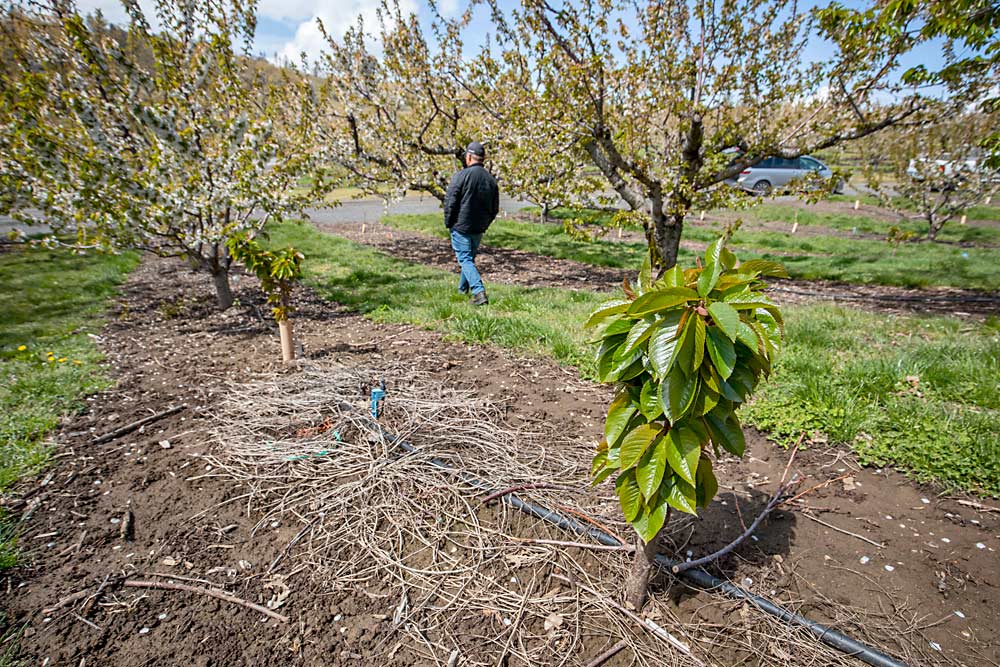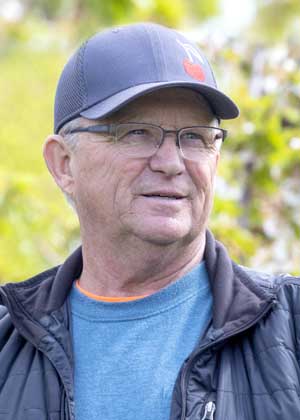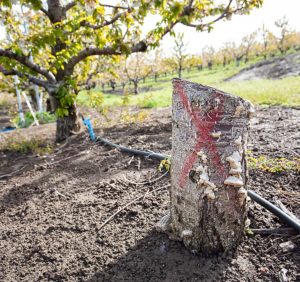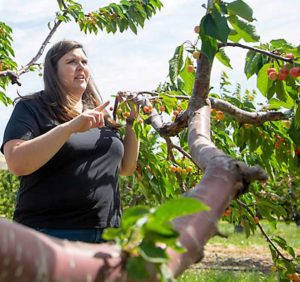
John Byers knows he is a maverick.
The Dalles, Oregon, cherry grower also knows he has viruses in his orchard and, due to economic realities and his historical experience, he just sort of lives with them. And, he knows his methods run counter to the advice of experts anxious to prevent the spread of destructive diseases.
For the record, he doesn’t ignore problems.

“I’m doing everything I can,” Byers said.
If a tree shows symptoms of viruses — blind wood, sick leaves, poor production or bad fruit — he removes it, and he replants right away in the same spot. He also adds a second tree to increase his density in the new pocket of sunlight.
But he does not fumigate or leave his ground fallow for a few years. Trees take several years to reach production, meaning he could be without fruit for six or seven years.
“To me, it’s a lifetime,” Byers said.
Ashley Thompson, Oregon State University tree fruit extension specialist, does not approve. She has told Byers so, quite clearly.
They laugh about it, but Thompson has concerns about the long-term health of his orchard and soil. She knows he has soilborne viruses and nematodes. She sends samples away for analysis, even if he doesn’t.
“He’s got a lot of problems in there,” she said.
She also understands his economic concerns. Removing and replacing trees costs an average of $118,095 per acre over seven years, considering re-establishment costs and lost revenue, according to Washington State University.
There is little economic support available for growers trying to stay ahead of disease. To be eligible for the federal Tree Assistance Program’s cost-share, growers must show at least 18 percent tree loss. A Washington state program offered 50 percent cost-share for removals — capped at $7,500 per applicant and a total of $225,000 — but Oregon growers such as Byers aren’t eligible.
Removing trees is critical, however, to prevent the spread of X disease and little cherry virus, two of the industry’s high-priority problems. Leaving infected trees in the orchard creates a reservoir of disease for neighboring trees, and even neighboring orchards, according to WSU.
Then, there are the leafhopper vectors that transmit X disease. Byers sprays to control broadleaf weeds, which harbor the hoppers. He tried spraying for leafhoppers directly — another priority according to extension folks — but it didn’t seem to work and threw his integrated pest management out of balance. So, he stopped.
As for soilborne viruses, such as tomato ringspot, Byers has a relatively isolated location and doubts those would spread out of his orchard.
Several years ago, when Thompson and others began discussing viruses with him, Byers followed their advice, mapping out the infections, removing trees and waiting a few years before replanting.
But viruses just seemed endemic, so he changed his strategy about three years ago. Some of the trees that tested positive continued to produce. Now, he removes symptomatic trees, but he replants right away after using an excavator to fluff up the soil. He then prunes or chemically treats suckers coming up from the ground.
He shrugs about bucking the advice of Thompson and other Northwest horticulture experts. He’s willing to take his chances to keep as much production as possible.
“I guess I’m a good experiment,” Byers said. •
—by Ross Courtney








Leave A Comment